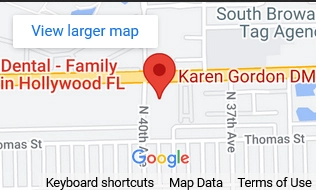5 Frequently Asked Questions about Digital X-Rays
For decades, dental X-rays have been responsible for detecting early signs of dental issues. Whether you’re suffering from impacted wisdom teeth or slowly decaying molars, Dr. Gordon will be able to see these in your X-rays. However, gone are the days when you had to develop X-rays in a dark room. Thanks to digital imaging, you and Dr. Gordon can see the results of your X-ray on a computer screen before it is stored in your file.
Since digital X-rays are new, let’s examine a few common questions many patients have about them.
Q1) How does digital radiography differ from conventional X-rays?
A: Traditional dental X-rays require film, which need to be developed into the black and white images. Digital radiography uses digital sensors instead, allowing you and Dr. Gordon to view enhanced images of every part of your mouth and its condition.
Digital images are captured in one of the following three methods:
- The Direct Method – During this procedure, an electronic sensor will be placed in your mouth to record images which are then relayed to Dr. Gordon’s computer.
- The Indirect Method – This technique uses a traditional X-ray film scanner , but the images are converted into digital ones
- The Semi-indirect Method – This method combines the first two techniques to convert X-rays into digital film.
Q2) What benefits will I get from using this technology
A: Going for digital X-rays provides both you and Dr. Gordon with numerous benefits, including the following:
- Shorter Appointments – Traditional dental X-rays require about 10 minutes to develop.
Digital X-rays are developed almost instantly and you get to see the results on the screen with Dr. Gordon. - High Quality Images – Traditional X-rays only come in one size and can’t be blown, hence viewing particular areas of the mouth can very difficult. However, digital radiographs can easily be enlarged on a screen. Dr. Gordon can also adjust the brightness, contrast or color of the image to help detect small cavities.
- Digitalizing Dental Records – Having digital images allows Dr. Gordon to store your records safely and even share them via email if the need arises. They can also forward your dental images to specialists or other dentists for a second opinion.
- Ecofriendly X-ray – If you are a friend of the environment, you will appreciate digital radiography more since it doesn’t require chemicals for developing film or space to store film.
Q3) Are there any types I should know of?
A: There are two types of digital dental X-rays: intraoral and extraoral. The first is the most common and provides ample detail for detecting cavities, tracking the development of your teeth, and ensuring the health of your bone. Extraoral X-rays are used to detect impacted teeth, problems between them, or issues with your jaw or other facial bones.
These two types can further be categorized. For instance, intraoral radiography includes bitewing and periapical X-rays while extraoral X-rays include multi-slice computed tomography and cephalometric projections.
Q4) What is the procedure for these X-rays?
A: Digital radiography is very simple. Dr. Gordon will ask you to stay still while she or an oral hygienist places the sensor inside or outside your mouth. Any movement during this can result in cloudy pictures. But, within a minute, the X-ray will appear Dr. Gordon’s screen.
Q5) Are digital X-rays safe?
A: Yes, digital X-rays are much safer than their traditional counterparts since they require less radiation. Digital X-rays use 90% less radiation than traditional film X-rays. This is why dentists recommend them for patients who require X-rays often or those concerned about being exposed to radiation, such as pregnant women.
Karen Gordon, DMD provides digital X-rays as part of her clinic’s preventative dentistry services. Don’t let your teeth be the victims of tooth decay and other issues. With digital X-rays, Dr. Gordon can detect problems early, and that means starting treatment sooner.




